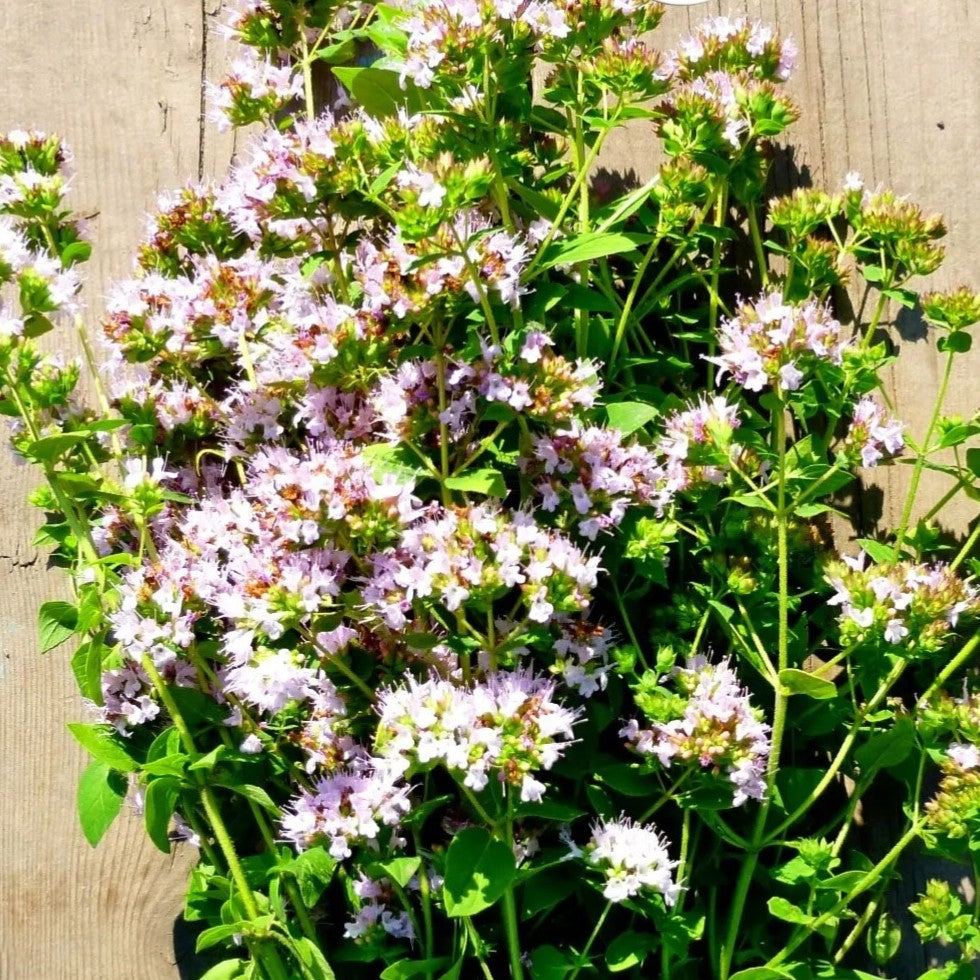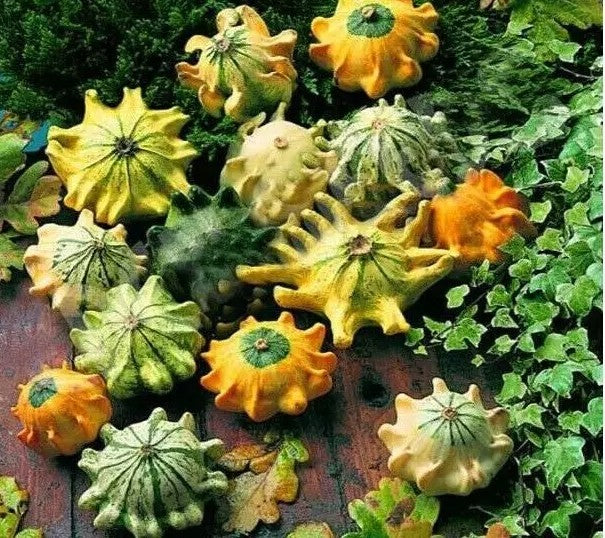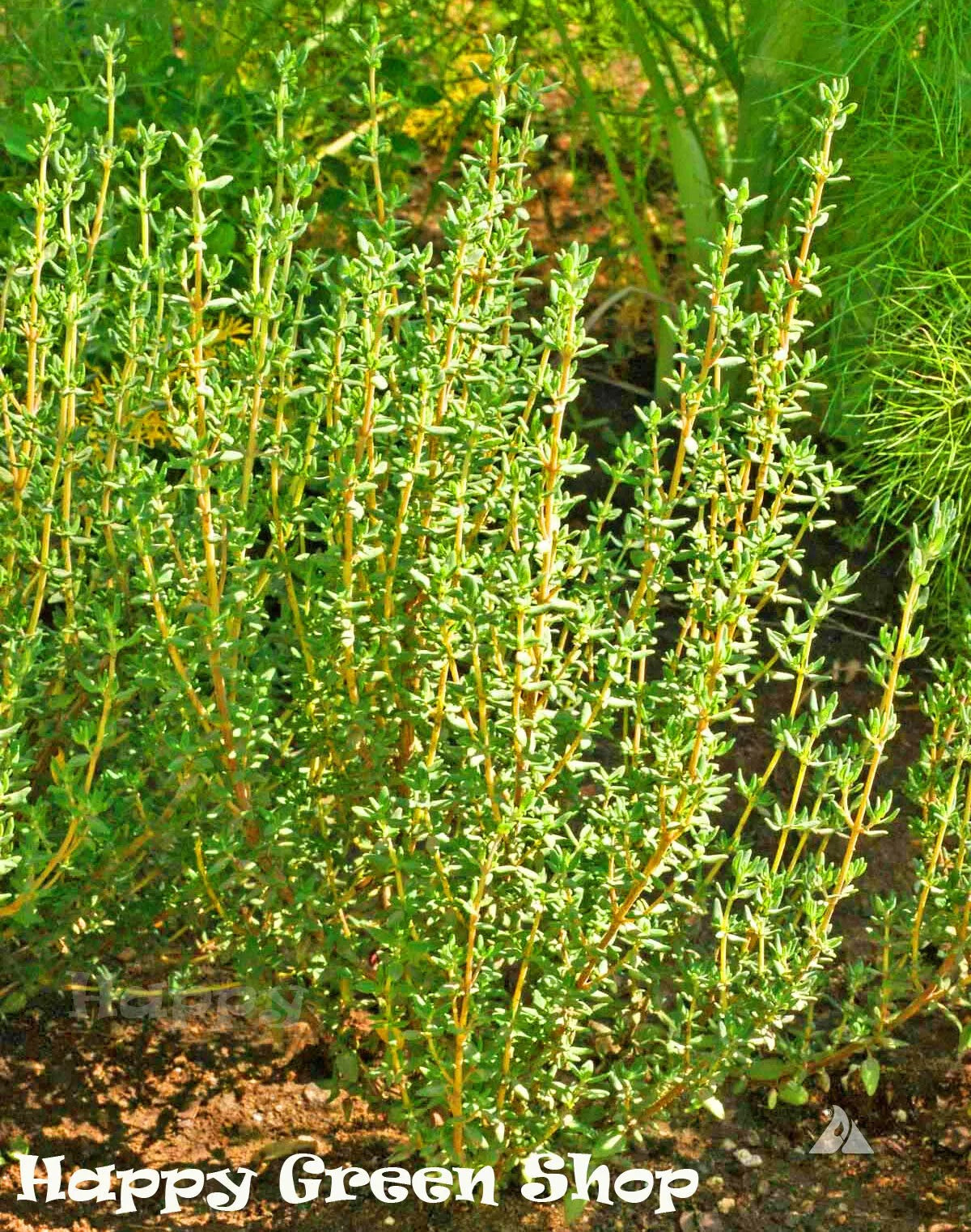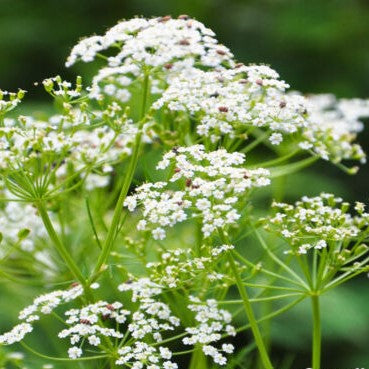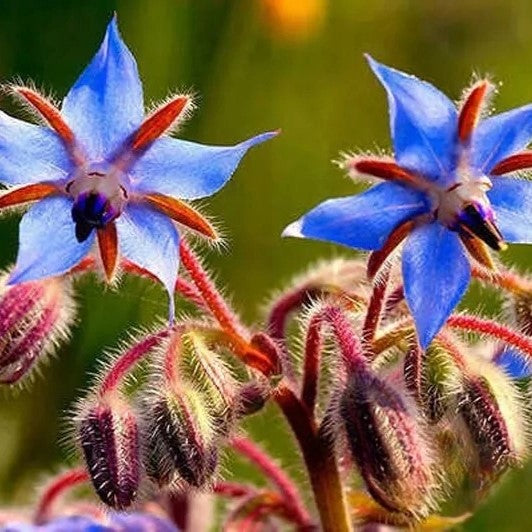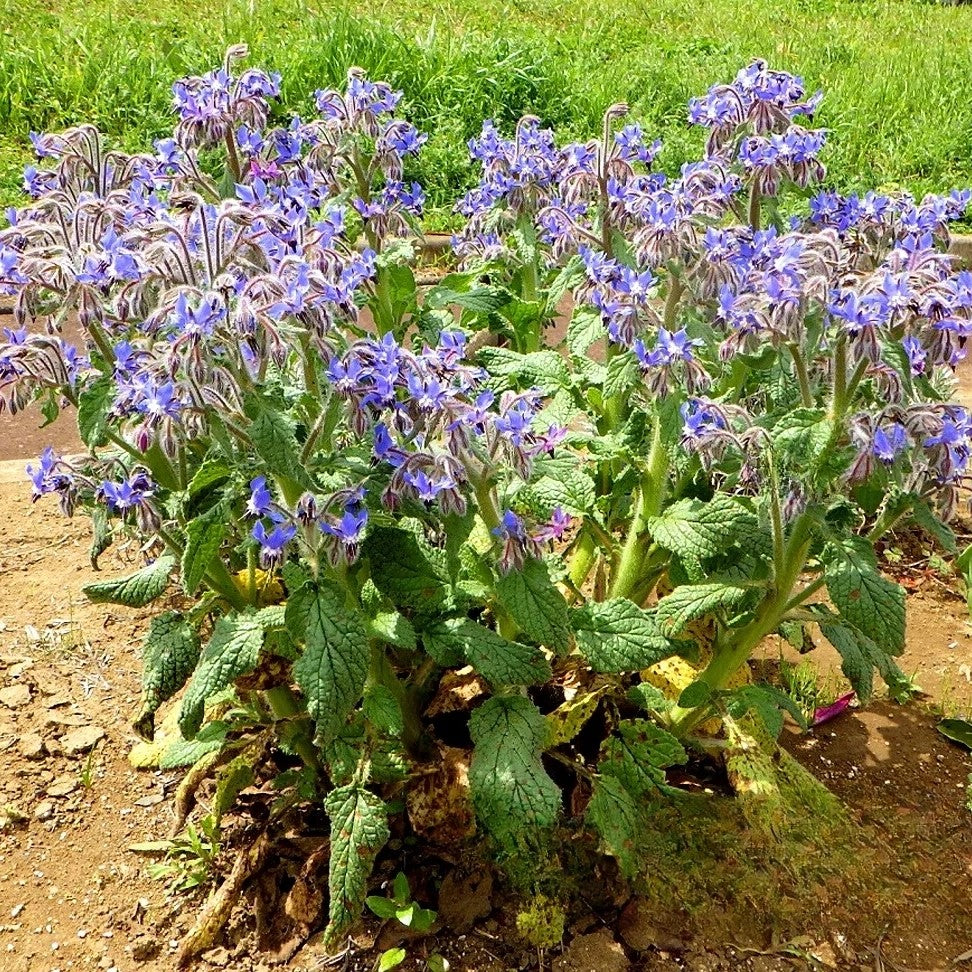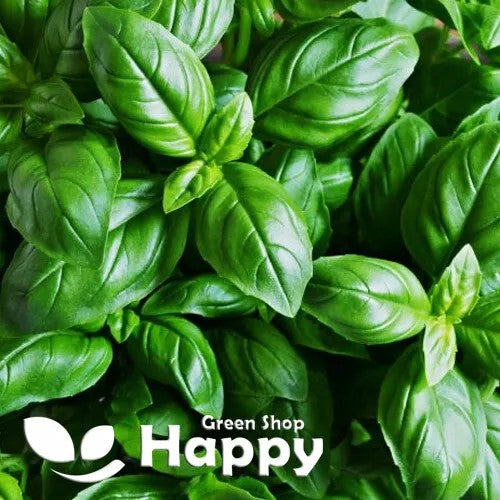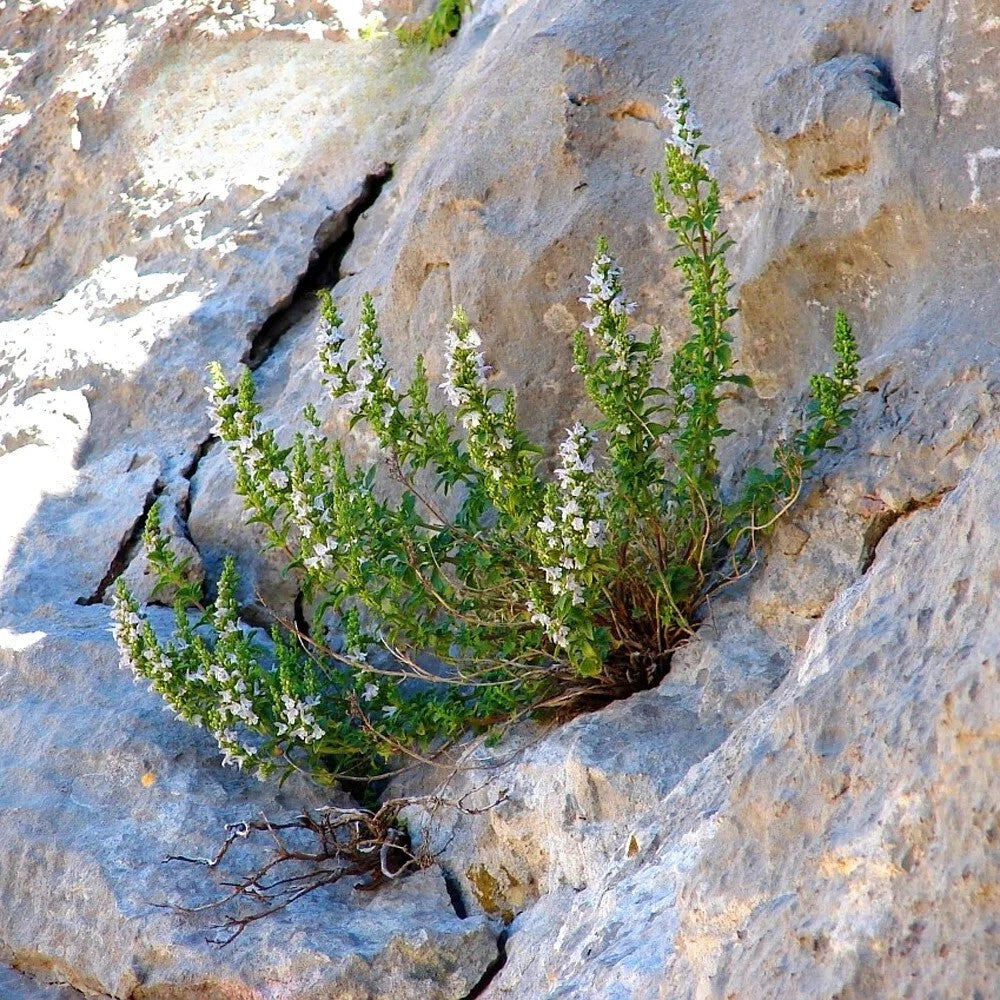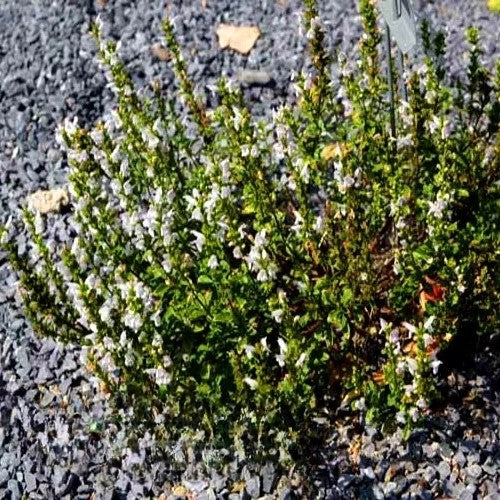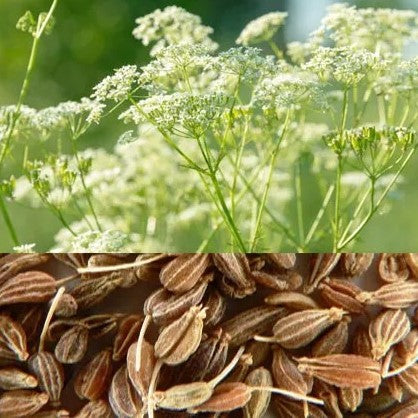Sort by:
68 products
68 products
Caraway Seeds (Carum carvi)
Grow aromatic, versatile seeds with Caraway (Carum carvi). This hardy biennial herb produces feathery green foliage and crescent-shaped seeds with a warm, slightly sweet flavor, perfect for bread, cooking, and herbal remedies. Easy to grow, it’s ideal for herb gardens, kitchen beds, and pollinator-friendly plantings.
How to Grow
-
Sow seeds directly outdoors from early spring to early summer.
-
Use fertile, well-drained soil in full sun.
-
Sow seeds 0.5–1 cm deep and thin seedlings to 20–25 cm apart.
-
Keep soil consistently moist for germination (10–20 days).
-
Harvest seeds in late summer when the seed heads turn brown; cut and dry them for storage.
Key Features
-
Feathery green foliage and aromatic crescent-shaped seeds
-
Biennial, hardy, and easy to grow
-
Ideal for baking, cooking, and herbal remedies
-
Attracts pollinators and enhances garden biodiversity
-
Suitable for herb gardens, kitchen beds, and companion planting
Ideal For
-
Herb gardens and kitchen beds
-
Baking, cooking, and spice blends
-
Pollinator-friendly gardens
-
Homegrown culinary and medicinal use
Sowing
-
Best time: Early spring to early summer outdoors
-
Depth: 0.5–1 cm
-
Spacing: Thin to 20–25 cm apart
-
Prefers full sun and fertile, well-drained soil
Quick Tip
-
Harvest seeds when seed heads are fully brown and dry them in a warm, airy place for long-term storage.
Borage – Seeds
(Borago officinalis) – Edible Flowers & Pollinator Magnet
Borage, also known as the starflower, is a fast-growing annual herb admired for its vivid blue, star-shaped flowers and fuzzy, cucumber-flavored leaves. A favorite of bees, butterflies, and other pollinators, it makes an excellent addition to herb gardens, vegetable patches, or pollinator-friendly borders. Both flowers and young leaves are edible – perfect for garnishing salads, desserts, drinks, or freezing into ice cubes.
Key Features
-
Plant type: Annual herb
-
Height: 50–70 cm
-
Spread: 30–40 cm
-
Flowers: Bright blue, star-shaped
-
Foliage: Grey-green, hairy leaves with cucumber flavor
-
Position: Full sun to light shade
-
Soil: Moderately fertile, well-drained
Ideal For
-
Herb & cottage gardens
-
Attracting pollinators (especially bees)
-
Edible flowers & herbal teas
-
Companion planting with tomatoes, strawberries, and courgettes
Sowing & Growing
-
Sow outdoors: April–June, direct in soil, 1 cm deep.
-
Germination: 7–14 days.
-
Spacing: Thin to 30 cm apart.
-
Flowering: June–September.
Care Tips
-
Easy to grow and self-seeding – will naturalize readily.
-
Pinch back growing tips for bushier plants.
-
Collect flowers regularly to encourage continuous blooming.
-
Water in dry spells but avoid overwatering.
Basil 'Italian Sweet Genovese' – Seeds (Ocimum basilicum)
Basil 'Italian Sweet Genovese' is the classic culinary herb prized for its aromatic, glossy green leaves and sweet, slightly spicy flavor. Perfect for pesto, salads, sauces, and garnishing, this variety grows vigorously and produces abundant foliage throughout the growing season. Ideal for home gardens, pots, and herb beds.
How to Grow
-
Sow seeds indoors from February to April, lightly covering with soil.
-
Maintain 18–22°C until germination.
-
Transplant seedlings outdoors after the last frost in a sunny, sheltered spot.
-
Prefers well-drained, fertile soil and regular watering.
-
Pinch off flower buds to encourage bushy growth and prolonged leaf production.
Key Features
-
Aromatic, sweet, and slightly spicy flavor
-
Classic Italian basil variety for culinary use
-
Fast-growing and productive
-
Suitable for garden beds, containers, and patios
-
Ideal for pesto, salads, sauces, and garnishing
Ideal For
-
Fresh culinary use in Italian and Mediterranean dishes
-
Herb gardens, raised beds, and container planting
-
Gardeners seeking high-yield, flavorful basil
Sowing & Harvest
-
Sow: February to April
-
Depth: Lightly covered
-
Harvest: May to October
Quick Tip
-
Regularly pinch young shoots to encourage bushy growth and prevent flowering, which can reduce leaf flavor.
Balkan Mint – 200 Seeds (Micromeria thymifolia)
Balkan Mint is a hardy, aromatic perennial herb with small, fragrant leaves and delicate flowers. Known for its refreshing minty aroma, it is perfect for teas, culinary use, garnishes, and herbal remedies. Its compact growth habit makes it an excellent addition to herb gardens, rockeries, or containers.
Thrives in well-drained soils and sunny locations, Balkan Mint is drought-tolerant and easy to maintain, making it ideal for both beginners and experienced gardeners.
How to Grow
-
Sow indoors: February – April
-
Sow outdoors: After last frost
-
Plant spacing: 20–25 cm apart
-
Position: Full sun to partial shade
-
Soil: Well-drained, moderately fertile soil
-
Care: Water moderately; trim leaves regularly to encourage bushy growth
Key Features
-
Hardy perennial with small, fragrant leaves
-
Refreshing minty aroma for teas, cooking, and garnishes
-
Drought-tolerant and low-maintenance
-
Compact growth ideal for gardens, rockeries, or containers
-
Produces delicate flowers adding ornamental value
Harvest
-
Harvesting period: 60–90 days after sowing
-
Pick leaves as needed; regular harvesting promotes continuous growth.
Short Tip
Grow in full sun and well-drained soil for the best aroma and compact growth.
Anise Seeds (Pimpinella anisum)
Grow your own aromatic spice with Anise (Pimpinella anisum). Known for its sweet, licorice-like flavor, this ancient herb produces delicate white umbels and seeds prized for baking, teas, liqueurs, and herbal remedies. A beautiful and useful plant, anise thrives in sunny spots and brings fragrance and flavor to both the garden and kitchen.
How to Grow
-
Sow seeds directly outdoors in spring after the last frost.
-
Choose well-drained, fertile soil in full sun.
-
Sow seeds 0.5–1 cm deep, spacing plants 20–30 cm apart.
-
Keep soil moist during germination (14–21 days).
-
Harvest seeds when flower heads turn brown and dry.
Key Features
-
Sweet, aromatic seeds with licorice-like flavor
-
Useful in baking, teas, and herbal medicine
-
Delicate white flowers that attract pollinators
-
Ancient herb with culinary and medicinal history
-
Easy to grow in sunny, well-drained soil
Ideal For
-
Culinary use in baked goods, teas, and liqueurs
-
Herbal remedies and natural medicine gardens
-
Pollinator-friendly gardens with fragrant blooms
-
Gardeners seeking dual-purpose beauty and flavor
Sowing
-
Best time: Spring, after last frost
-
Depth: 0.5–1 cm
-
Spacing: 20–30 cm apart
-
Prefers full sun and well-drained soil
Quick Tip
-
Harvest seeds early in the morning when flower heads are dry, then store in an airtight container to preserve their aromatic flavor.
Showing 68/68



